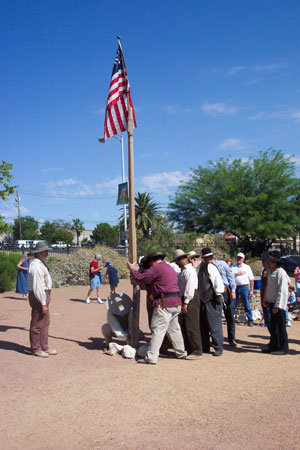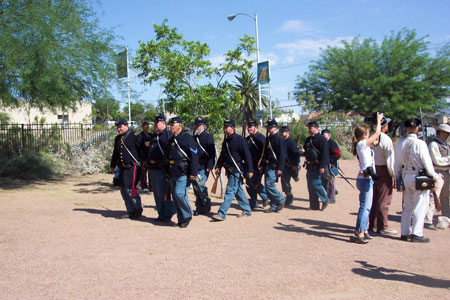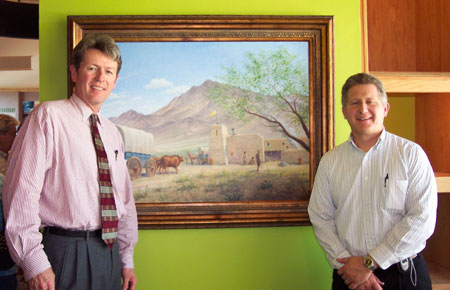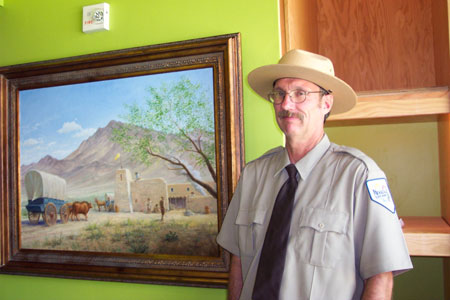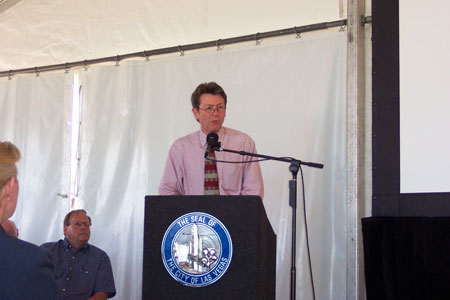Sesquicentennial Commemoration of the Mormon Fort, Las Vegas, Nevada

As part of the sesquicentennial celebration of the establishment of the Old Mormon Fort in Las Vegas, MHSF published a book titled, A Gamble in the Desert: The Mormon Mission in Las Vegas (1855-1857) which is now available for purchase.
During this same month there was a commemoration held at the Old Las Vegas Mormon State Historic Park on the evening of June 11th. Jonathan W. Bullen, member of the MHSF board of trustees, spoke at the event. The Foundation commissioned and donated a painting of the Fort by Ken Corbett.
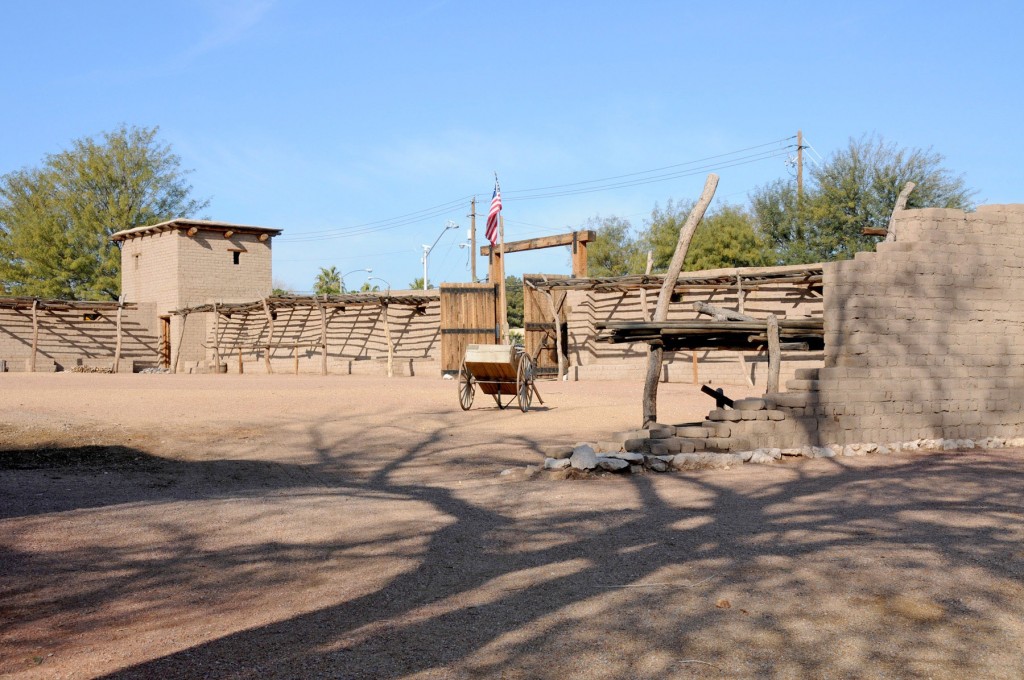
A special DVD presentation which MHSF assisted with was created to highlight this interesting period of Nevada history.
Photos
Articles & Resources
Old Las Vegas fort attracts 3,000 for celebration
Author(s): John Hanks
Published in: Church News
Publication Date: June 20, 2005
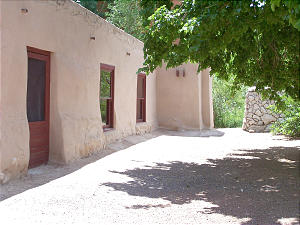
Photo by Kim Webster
LAS VEGAS, Nev. — Nearly 3,000 people gathered at the Old Las Vegas Mormon Fort State Park in Las Vegas, Nev., June 11 to celebrate the 150th anniversary of the establishment of the historic fort and to dedicate a new visitors center on the site. The event was held in conjunction with the yearlong centennial celebration of the City of Las Vegas.
Participants enjoyed a flapjack breakfast, a pioneer dutch oven lunch, a program, a special video documentary, free tours and entertainment throughout the day by the Las Vegas Mormon Youth Symphony and Chorus and others. Elected, historical, community and multi-denominational church officials also participated in the program.
The Old Mormon Fort was created on June 15, 1855, at the request of President Brigham Young as a way station between Salt Lake City and the Mormon settlement of San Bernardino, Calif., and as a mission to the Native Americans in the Las Vegas Valley. It was the first non-native settlement in the Las Vegas area. Thirty missionaries built and took up residence in the fort, and occupied it for two years.
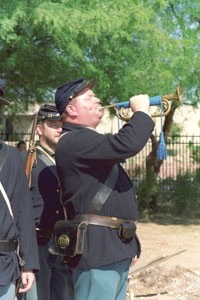
Photo by Carrie Mauriello Crozer
“How grateful we should be for the courage and determination of those faithful pioneers,” said Ace Robison, president of the Logandale Nevada Stake, who spoke at the event.
“It is with deepest appreciation that I, on behalf of all Latter-day Saints in Nevada, congratulate and thank the State of Nevada as it has seen fit to honor this piece of history by declaring this place a state park. We are grateful for this beautiful visitors center which we dedicate today. It seeks so diligently to tell the story of those sturdy pioneers who first came here. It is a story that needs to be told.”
Gary Reese, Las Vegas mayor pro tem, told the audience that as they celebrate both the centennial of Las Vegas and the sesquicentennial of the Old Las Vegas Mormon Fort — the oldest standing building in Nevada today — they should reflect on the courage and faith of the early travelers and of the Mormon missionaries who established the fort.
Even in its hardships, the mission was a success, he said. Native Americans were befriended, a variety of crops were successfully planted through irrigation techniques learned at the mission and Las Vegas was placed on U.S. maps as a settlement.
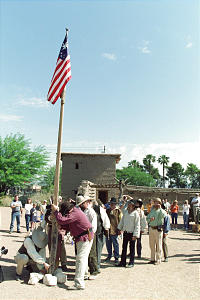
Hoisting a U.S. flag representing the era, the “Meadows Missionaries of 1855” re-enact the posting of colors during the 150-year celebration.
Photo by Carrie Mauriello Crozer
“The Mormon missionaries left a legacy of faith, courage and dedication to a cause more important than silver or gold or worldly fame,” he said. “They left a legacy of pioneering in a desert oasis that later drew millions to visit and hundreds of thousands to make their home, to raise their families, to worship God according to the dictates of their own consciences and to toil and reap the rewards of honest hard work and dedication in a community that is recognized as ‘the City of the 21st Century’ throughout the world — Las Vegas.”
President Robison, chairman of the Las Vegas multi-stake public affairs council, said organizers were extremely pleased with the turnout, which was three times more than they anticipated.
“It showed great interest in the great heritage those 30 Mormon missionaries began 150 years ago,” he said. “Through the new visitors center, today’s citizens can connect with that pioneering spirit that gave them roots, and that lives today as we continue to build Zion in the Las Vegas Valley.” “Through the new visitors center, today’s citizens can connect with that pioneering spirit that gave them roots, and that lives today.”
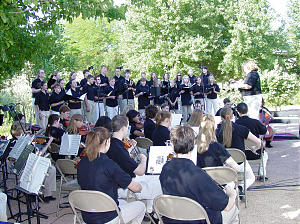
Photo by Gordon Greenhalgh
'Centennial' 150 years in the making
Author(s): Lee Benson
Published in: Deseret Morning News
Publication Date: February 9, 2005
The advertising flier that arrived in Monday’s mail was from the Las Vegas Convention and Visitors Authority.
“Let Las Vegas’ Centennial Celebration Begin!” it began.
What followed were details of plans to commemorate 100 years since Las Vegas was incorporated as a city on May 15, 1905.
Since this is an event “100 years in the making” and since this is Las Vegas we’re talking about, the celebrating will last the entire year. They’re going to party like it’s 1999, and 1998, and 1997. . .
What’s not to toast? The Boulder Dam in 1928, legalized gambling and quickie divorces in 1931, Bugsy Siegel opening the Flamingo Hotel in 1946, the Rat Pack at the Sands in 1960, Elvis and Priscilla at the Aladdin in 1967, Evel Knievel at Caesars Palace in 1973, the opening of The Mirage in 1989.
Apt to get lost in the shuffle, however, is the real beginning of Las Vegas.
The Mormons in 1855.
Few humans alive know the story better than Fred Woods. Fred is a professor of church history and doctrine at BYU who has paid particular attention over the years to researching the first permanent white settlement established at Las Vegas — when Brigham Young sent 30 Mormon men on a mission in the spring of 1855 to what was then called Las Vegas springs.
The city was started a hundred years ago, but the Mormons were there 50 years earlier,” says Fred. “Not only is this year a centennial anniversary for Las Vegas, it’s a sesquicentennial.”
To commemorate the sesquicentennial, Fred is putting the finishing touches on his book, “A Gamble in the Desert: the Mormon Mission in Las Vegas (1855-1857).” The seven-chapter book is scheduled to be published by the Mormon Historic Sites Foundation (www.mormonhistoricsites.org) later this spring and will go into great detail about the attempt by leaders of The Church of Jesus Christ of Latter-day Saints to install a way station on the “Mormon Corridor” between Salt Lake City and the Pacific Ocean.
Las Vegas — Spanish for “the meadows” — offered the first water supply after a watering hole in southern Utah known as the muddy. Early Spanish explorers termed the 52 miles between the muddy and Vegas jornada del muerte, or “journey of death.”
Some people still call it that — in memory of their wallets.
Anyway, Brigham Young wanted to do something about the lack of travelers’ services back then, so he sent the 30 men from LDS headquarters in Salt Lake City in 1855, followed the next year by women and children.
At its height, the Las Vegas Mission had a population of 103.
It turned out to be a two-year mission — standard procedure these days, but the plan in 1855 was for much longer duration. The problem, as Fred Woods’ research reveals, was a power struggle between two LDS leaders, William Bringhurst and Nathaniel Jones. Some folks sided with Bringhurst, some with Jones, and soon enough the house divided against itself fell.
This history is little-known because what happens in Vegas, stays in Vegas.
In 1857, the Mormon mission was abandoned, leaving a partially finished adobe fort that a homesteader named Octavius Decatur Gass later fixed up and turned into a ranch that turned into downtown Las Vegas.
It was the coming of the railroad that finally brought about city incorporation papers in 1905. They were signed at a site no more than a long throw of the dice from the original Mormon mission.


